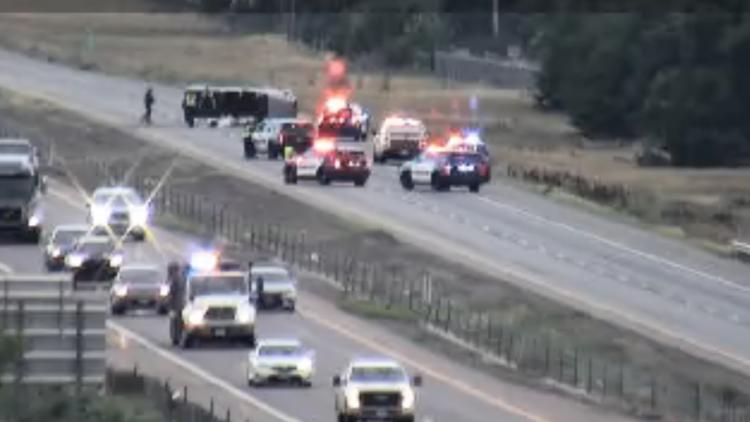
In a significant traffic incident, the westbound lanes of Interstate 76 were closed early Friday morning following a rollover crash. The accident, which occurred near the outskirts of Denver, has led to substantial delays for commuters and prompted an immediate response from local authorities.
The crash, reported around 5:30 a.m., involved a single vehicle that overturned, blocking all westbound lanes. Emergency services, including the Colorado State Patrol and local fire departments, were dispatched to the scene to manage the situation and ensure the safety of drivers.
Immediate Impact and Response
According to the Colorado State Patrol, the driver of the vehicle suffered minor injuries and was transported to a nearby hospital for treatment. The crash site, located in Adams County, quickly became a focal point for traffic management efforts as authorities worked to clear the debris and investigate the cause of the accident.
Commuters heading into Denver faced significant delays, with traffic backed up for several miles. Detours were put in place, redirecting vehicles to alternate routes while crews worked to reopen the highway.
Context and Background
Interstate 76 is a critical transportation corridor in Colorado, connecting various suburban areas to the heart of Denver. It is heavily trafficked, especially during morning rush hours, making any disruption a significant concern for daily commuters and logistics operations alike.
This particular stretch of the interstate has been the site of several accidents in recent years, raising questions about road safety and the need for infrastructure improvements. Local officials have previously discussed plans to enhance safety measures, including better signage and improved road conditions.
Expert Opinions and Historical Parallels
Transportation experts suggest that rollover crashes, while less common than other types of accidents, can often be attributed to factors such as high speeds, sudden maneuvers, or adverse weather conditions. In this instance, authorities are investigating whether any of these elements played a role.
Historically, similar incidents on major highways have prompted discussions about the implementation of additional safety features, such as rumble strips and guardrails.
“Rollover crashes are particularly dangerous due to the high risk of injury and the potential for multi-vehicle collisions,” said Dr. Jane Williams, a transportation safety analyst. “It’s crucial to address the underlying causes to prevent future occurrences.”
Implications and Forward-Looking Analysis
The closure of Interstate 76 underscores the importance of maintaining and upgrading critical infrastructure to accommodate growing traffic demands. As Denver continues to expand, the pressure on its transportation networks will likely increase, necessitating proactive measures to ensure safety and efficiency.
In the aftermath of the crash, local authorities are expected to review the incident thoroughly and consider potential improvements to the highway. This may include increased patrols, enhanced driver education programs, and potential legislative measures aimed at reducing the likelihood of similar accidents.
For now, commuters are advised to stay informed about traffic conditions and plan their routes accordingly. The reopening of the interstate is anticipated later in the day, pending the completion of cleanup and investigation efforts.






